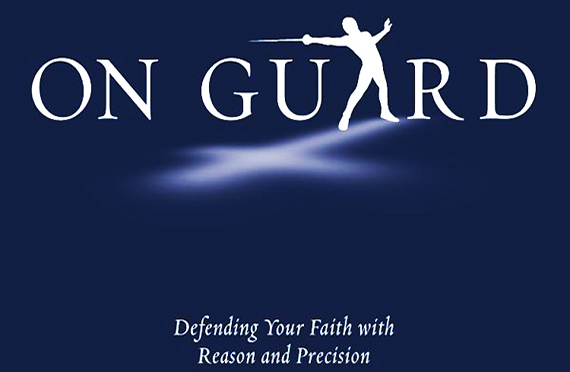This review first appeared in the Christian Research Journal, volume 34, number 02 (2011). For further information or to subscribe to the Christian Research Journal go to: http://www.equip.org
With two earned Ph.D. degrees and a reputation for logical thinking, William Lane Craig may very well be the best Christian debater in modern history. The atheists and skeptics whom he debates are no slouches—names such as Gerd Lüdemann, John Dominic Crossan, and Christopher Hitchens are among them—but more often than not, many in the audiences at his debates are left scratching their heads, wondering, “Was this opponent a set-up to make Christianity look good?”
For example, in an early debate held in June 1993 at Willow Creek Community Church, eighty-two percent of the audience that was polled afterward said Craig’s reasoning was more persuasive than what was offered by his atheist opponent. In addition, forty-seven people in the 8,000-member audience that night became Christians, with none moving into the atheist camp.
This is the power of sound reasoning, which, if one is not careful, can easily turn into rationalism. But while he utilizes deductive reasoning to get the inquirer to come to the banquet table, Craig emphatically stresses that faith, not mere arguments, is what brings a person into relationship with the God of this universe. In his debates, Craig typically uses his personal testimony as one of his five points for God’s existence. In essence, he believes that reason and faith are friends, not foes, in the pursuit of truth.
Written in a very readable manner, On Guard is a simpler presentation than his 1984 work Reasonable Faith (third edition in 2008), from which he liberally borrows key concepts. For those familiar with Craig’s debates, a number of quotes will also be recognized; if you could close your eyes, you can almost hear him speaking in his authoritative manner.
Craig says he finds great satisfaction in supplying Christians with the ability to understand how strong the Christian position really is. He writes, “One Canadian student remarked to me following a debate, ‘I can’t wait to share my faith in Christ!’ People who lack training in apologetics are often afraid to share their faith or speak out for Christ out of fear that someone might ask them a question….Training in apologetics will help to make you a bold and fearless witness for Christ” (p. 19).
The book features creative illustrations throughout as well as short minibiographical sketches of the philosophers mentioned by Craig; summarized points are also boxed in the outside margins, making for a very modern layout. Two sections are interspersed that allow Craig to relate personal stories, including how he became a Christian as a young adult. In addition, each chapter ends with a wonderful two-column flow chart detailing the chapter’s logical syllogism. In the right column, the possible responses of the atheist/skeptic are listed, which Craig answers on the left side of the chart. For those who learn best visually, this feature is worth the price of admission.
Make no mistake about it, though. While Craig uses a variety of tactics to simplify higher-level thinking, the book is anything but dumbed down. It will take the full concentration for most to follow the skilled philosopher. For instance, no Craig debate on God’s existence can occur without his use of the Kalam cosmological argument. Craig relates the story of “Hilbert’s Hotel,” an illustration that has to be the simplest method to describe the most complex argument for the existence of God. The absurdity of an actual infinite is shown, for how could a hotel be full and yet have infinitely more vacancies? As one of his students put it, the sign outside such a hotel—if it were able to exist—ought to read, “NO VACANCY (GUESTS WELCOME)” (81).
Referring to the possibilities of how the universe was created, Craig writes, “The cause of the universe must therefore be a transcendent cause beyond the universe. This cause must be itself uncaused because we’ve seen that an infinite series of causes is impossible. It is therefore the Uncaused First Cause. It must transcend space and time, since it created space and time” (99).
In Chapter 9, Craig goes over the possible theories of Jesus’ resurrection. One of the two doctoral degrees earned by Craig is on the subject, as he studied under New Testament scholar Wolfhart Pannenberg. Thus, he is able to state with authority that “the wide majority of scholars who have written on the subject accept the facts of the empty tomb” (243).
Overall, On Guard is a book that ought to be studied by every Christian who would prefer to be found holding a reasonable faith rather than a blind faith. —Eric Johnson
Eric Johnson is a researcher with Mormonism Research Ministry (www.mrm.org) and coauthor of Mormonism 101 (Baker, 2000). He is also an associate editor for the Apologetics Study Bible for Students (Holman, 2010).









